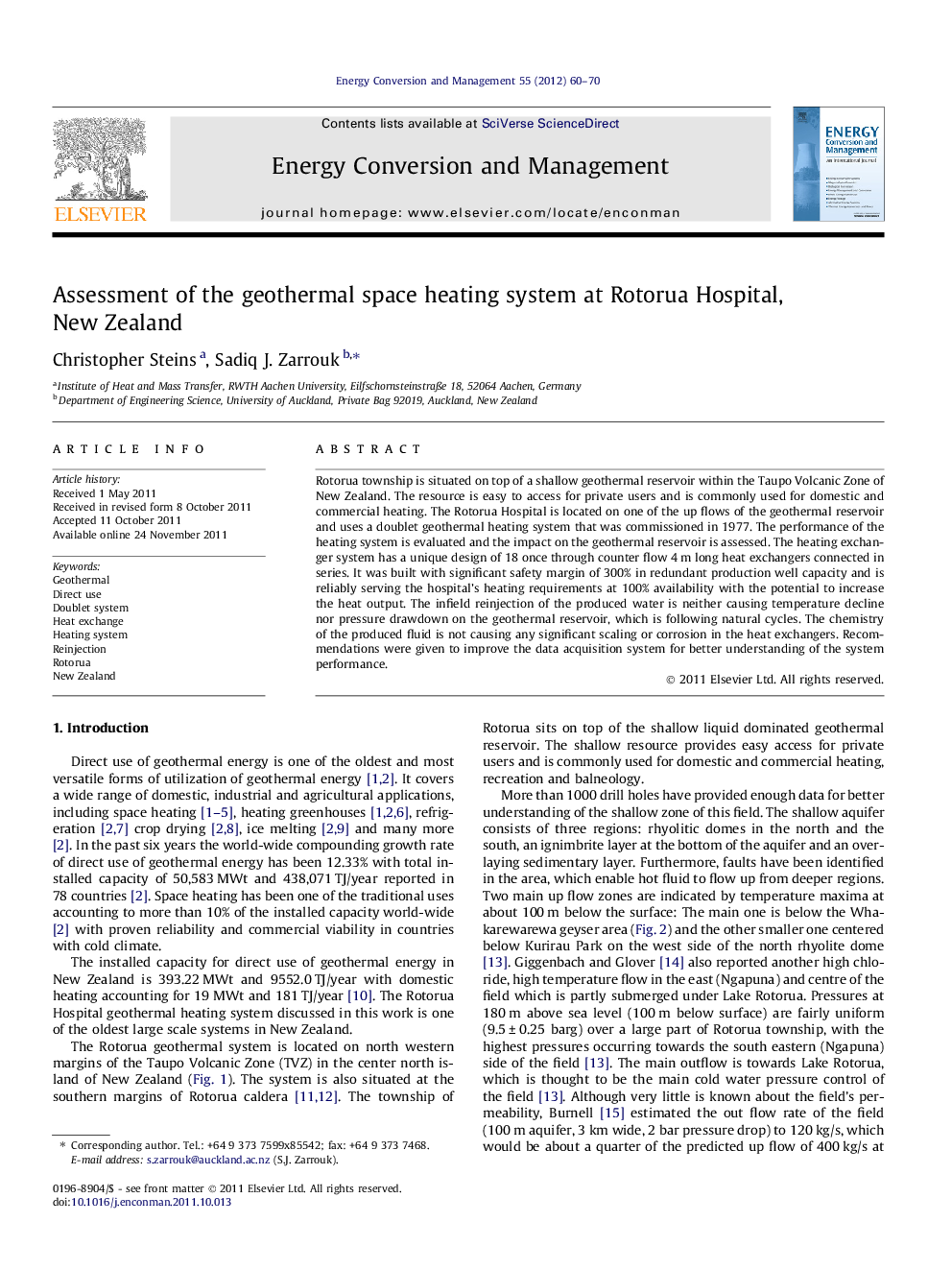| Article ID | Journal | Published Year | Pages | File Type |
|---|---|---|---|---|
| 764421 | Energy Conversion and Management | 2012 | 11 Pages |
Rotorua township is situated on top of a shallow geothermal reservoir within the Taupo Volcanic Zone of New Zealand. The resource is easy to access for private users and is commonly used for domestic and commercial heating. The Rotorua Hospital is located on one of the up flows of the geothermal reservoir and uses a doublet geothermal heating system that was commissioned in 1977. The performance of the heating system is evaluated and the impact on the geothermal reservoir is assessed. The heating exchanger system has a unique design of 18 once through counter flow 4 m long heat exchangers connected in series. It was built with significant safety margin of 300% in redundant production well capacity and is reliably serving the hospital’s heating requirements at 100% availability with the potential to increase the heat output. The infield reinjection of the produced water is neither causing temperature decline nor pressure drawdown on the geothermal reservoir, which is following natural cycles. The chemistry of the produced fluid is not causing any significant scaling or corrosion in the heat exchangers. Recommendations were given to improve the data acquisition system for better understanding of the system performance.
► The doublet geothermal heating system at Rotorua Hospital has a unique design. ► The system has been running with 300 % redundancy and 100% availability since 1977. ► Geothermal fluid with more than 130 °C is produced from 85 meter depth only. ► Full infield reinjection insures the sustainability of the shallow resource. ► Two-phase flow and non condensable gas reduces the overall heat transfer coefficient.
